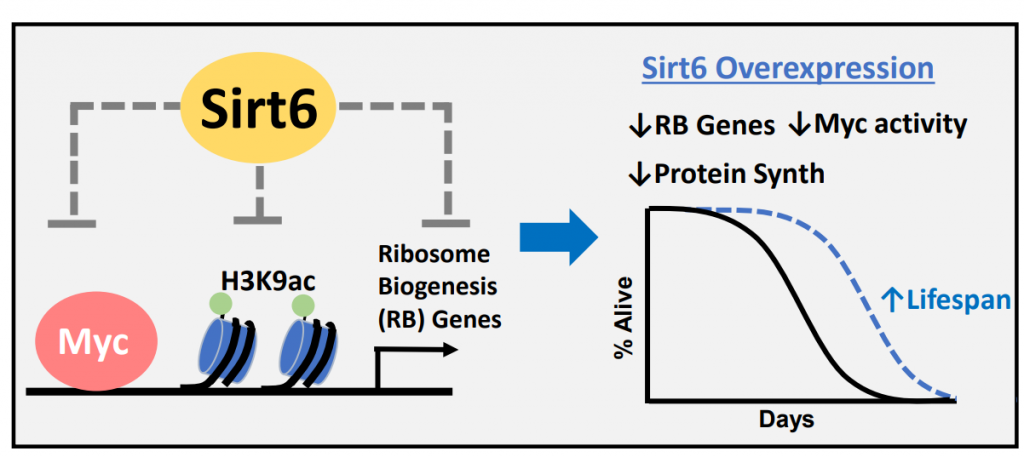Key points:
- Elevated sirtuin – enzymes that promote longevity –activity, specifically Sirt6 (Sirtuin 6) increases lifespan by 33% in male flies and 38% in female flies and strengthens resistance to oxidative stress.
- Sirt6 lowers expression of genes that participate in making proteins, corroborating with research showing that inhibiting protein synthesis extends lifespan.
- These findings highlight the potential for Sirt6 activators in treating age-related disease and extending healthspan in humans.
Sirtuins – enzymes that use the aging-related vital molecule NAD+ as fuel – play key roles in longevity. These longevity-linked proteins maintain cellular health and are known to participate in DNA repair and stability. However, the extent to which sirtuins contribute to prolonging lifespan across species is still not clear.
On the heels of promising data showing that Sirt6 extends the median lifespan of male and female mice by 27% and 15%, a new study shows that Sirt6, one of seven sirtuin genes, also increases longevity in flies, suggesting that Sirt6’s role in regulating lifespan is conserved across several species in the animal kingdom. Brown University researchers conducted this new study to further elucidate their role in mediating prolonged lifespan in multiple organisms.
Understanding how sirtuins govern age-associated metabolic changes will help scientists unlock new avenues in which preventing the development and progression of harmful age-related diseases is possible. Given that sirtuin abundance naturally declines with age, researchers are continuously looking for ways to replenish these life-preserving compounds.
In the present study, Taylor and colleagues manually overexpress one of the sirtuin genes – Sirt6 – in male and female flies. Upon doing so, the Brown researchers found that increasing sirtuin levels increased lifespan by 33% in male flies and 38% in female flies. Additionally, investigators found that Sirt6 overexpression enhanced survival by strengthening resistance to oxidative stress, a key contributing factor of biological aging. These initial findings suggest that sirtuins facilitate increased lifespan by blocking oxidative stress-induced cellular damage. What’s more, these results corroborate previous human studies, where Sirt6 overexpression boosted human survival by improving DNA repair mechanisms.
To further characterize the manner in which Sirt6 extends lifespan, Taylor and colleagues analyzed protein levels of genes involved in protein synthesis and ribosome – vital proteins involved in translating mRNA to new proteins – generation. Studies show that reduced protein synthesis and ribosome generation are linked to longevity in yeast, worms, flies, and even humans. The results showed that Sirt6 overexpression diminished both protein synthesis and ribosome generation in male and female flies, as evidenced by the decreased levels in protein synthesis and ribosome genes.
Interestingly, other researchers have achieved decreased protein synthesis in flies by inhibiting mTOR – a protein known to be involved in nutrient sensing and aging – with rapamycin treatment. Given that both Sirt6 gene activation and rapamycin treatment extend fly lifespan by blocking protein synthesis, perhaps these avenues can be explored therapeutically individually or in tandem.
Taken together, the study’s findings demonstrate Sirt6’s effectiveness in prolonging fly lifespan through means of oxidative stress-resistance and altered expression of genes that regulate protein synthesis. Notably, the lack of available studies correlating Sirt6 with human longevity warrants further research to assess the translatability of Sirt6’s effects in humans.
